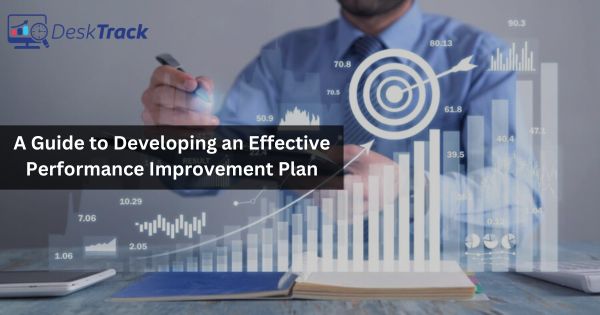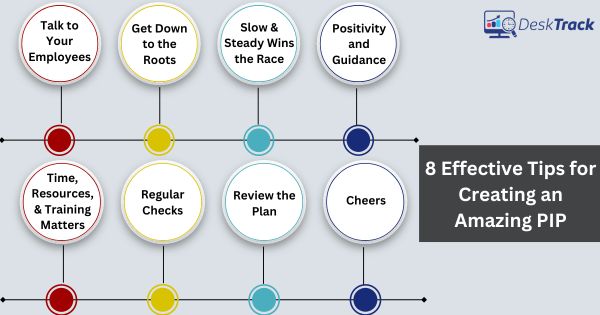
Did any of your employees start from 1 and are at 1 even after months of working in your organization? Then you may need to make a performance improvement plan for them pronto. Familiar with this term, and looking for some guidance? Here’s the ultimate guide to developing an effective performance improvement plan.
An Introduction into Performance Improvement Plan
In comparison, a performance improvement plan is similar to a school report card. However, students don’t get paid, so the former is more serious. As for the PIP, also known as a performance review is a document, outlining, existing performance problems, and objectives to overcome productivity issues and increase employee productivity.
Why do Some Employees Require a Personal Improvement Plan?
It’s simple and obvious. They either can’t self-improve or don’t have the time for it at home. In such a situation, you need to come up with a personal improvement plan to improve their well-being as well as their performance. There are a few points you need to remember as to why your employees need a PIP.
- All your employees are not the same, behavior and skillswise.
- Every employee needs a specific approach to learn.
- Your employees have personal needs.
- Lift the strain of their well-being.
- Get appreciation.
- To adapt to the change in office culture.
Avoiding the Need Of a PIP
Make Your Workday More Productive
Time tracking and work management can help you reach your goals faster.
Try 15 Days for Free

The idea behind a performance improvement plan training is to boost your employees. This plan is personally curated for each employee and thus will require an extra investment, which you should consider before helping your employee improve.
A good tip here is to give your employees many chances for self-improvement. Considering the factors, which are affecting them is key. You cannot ignore the possibility that the same factors, which affect their wellbeing may be affecting their efficiency. In such cases, you should support your employee instead of an unnecessary employee performance improvement scheme.
- The bottomline is to avoid PIPs as much as possible.
Appropriate Circumstances For a PIP
Please remember that you must be certain that your employee or employees need a performance improvement plan before enrolling one in it. By now, you already know that PIPs are for employees who are not achieving their full potential.
However, before making an employee go through a performance improvement program, you should identify, whether it is entirely their fault or not. For example, their manager might have set impossible standards or may have not provided enough clarity for their role.
Overall, you should know, what is the actual reason your team member is lacking behind before taking the step? A good performance management software such as DeskTrack will provide you accurate metrics for the same.
PIP: Not a Step Towards Termination
The biggest misconception your employee may have is that being pushed into a performance improvement plan is a step towards them, soon seeing their termination letter. However, it is not true. The reality is that failing to progress from or not complying with the scheme can result in that.
The bottomline is to explain to your employee and give clarity about the terms of the program. Otherwise, they can fear the worst, which is not good for their efficiency.
8 Effective Tips for Creating an Amazing PIP

After trying everything else, if it still comes down to this, i.e., a performance improvement plan training, it is essential that you get it right. Here are the steps to create the most amazing employee performance improvement structure.
- Talk to your employee first.
- Get down to the roots.
- Slow and steady wins the race.
- Positivity and guidance.
- Time, resources, and training matters.
- Regular checks.
- Review the plan.
- Cheers.
1. Talk to Your Employee First:
The first step of any plan is communication and lots of it.
2. Get Down to The Roots:
Now that you have talked to your employee, it’s essential to identify the primary cause of the issue. Performance metrics from performance management software like DeskTrack can help you with that.
3. Slow and Steady Wins the Race:
A performance plan, which tells your employee to, for example, master Java in 3 days is unreal and impossible to achieve. Even if they achieve this target by working on it 72/3, it will still not improve anything.
Rather, it may do the opposite. Overall, any learning process must be slow and steady. The best way is to set achievable goals and provide your employee the much needed time to work on it.
4. Positivity and Guidance:
Remember that your employee needs all your support during this program. A positive approach, full of guidance whenever needed is the best step here. Think of it like teaching motor skills to a child.
5. Time, Resources, and Training Matters:
Another part of a good performance improvement program is that you make the time and resources available to your employee. The less overwhelmed they are, the better.
6. Regular Checks:
Your work doesn’t end after creating an improvement plan and handing it to your employee. It must also work and help your employee reach certain goals and objectives. That’s where you need to regularly check on how everything is going.
7. Review the Plan:
Did it work? Did it match your expectations? If not, what steps can you take? This step is a great opportunity for both the leader (employer) and the follower (employee) to improve. Conduct a meeting, discuss, and become productive together.
- Note that applications such as DeskTrack can give you the most accurate data for the same.
8. Cheers:
If your plan works. That’s great. No need to swoon over it. Appreciate the improvement, and maybe even throw a small party in appreciation. Note that after going through any rigorous schemes, an employee feels like a second probation. So, it will be good for you to assure them that it was just a part of a growth process.
Conclusion
We conclude today’s blog titled, a guide to developing an effective performance improvement plan. To summarize, we discovered a lot about the performance improvement plan and its needs, and cleared a few misconceptions regarding it. Finally, we wrapped up with the steps to create an effective team member improvement plan.



